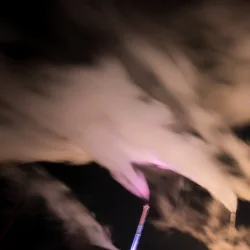At Schmidt & Clark, we are dedicated to helping individuals who have suffered due to drilling operations. Our experienced legal team is here to guide you through the process and fight for the compensation you deserve.
Please click the button below for a Free Consultation or call us toll-free 24 hrs/day for legal advice by dialing (866) 588-0600.
Table Of Contents
- Haynesville Shale Drilling Accident Lawsuit Overview
- Latest Haynesville Shale Drilling Accident Lawsuit Updates
- OSHA Reports and Statistics
- Haynesville Shale Drilling Injuries & Side Effects
- Do You Qualify for a Haynesville Shale Drilling Accident Lawsuit?
- Haynesville Shale Regulatory Information
- Statute of Limitations for Haynesville Shale Drilling Accident Lawsuits
- FAQs
- 1. How deep is the Haynesville Shale and why does this create additional risks?
- 2. What should I do immediately after a Haynesville Shale drilling accident?
- 3. Can I file a third-party claim for a Haynesville Shale drilling injury?
- 4. What types of workers are at risk in Haynesville Shale operations?
- 5. How long does a Haynesville Shale drilling accident lawsuit typically take?
- 6. What makes Haynesville Shale drilling particularly dangerous compared to other operations?
- 7. What are the common causes of Haynesville Shale drilling accidents?
- 8. Can family members file a lawsuit if a worker dies in a Haynesville Shale accident?
- 9. What compensation might be available for Haynesville Shale drilling accident victims?
- 10. Do I need to pay upfront fees to pursue a Haynesville Shale drilling accident lawsuit?
- Get a Free Haynesville Shale Drilling Accident Lawsuit Evaluation With Our Lawyers
Haynesville Shale Drilling Accident Lawsuit Overview
Haynesville Shale drilling accident lawsuits arise from serious accidents in gas drilling operations that result in injuries, fatalities, and environmental damage affecting workers and communities.
The primary allegations in these lawsuits typically involve negligence, equipment failure, toxic chemical exposure, and inadequate safety protocols by drilling companies.
Workers in these operations face risks seven times higher than those in other industries according to OSHA data.
Gas drilling operations in the Haynesville Shale region, located at depths of 10,500 to 13,000 feet in Northwest Louisiana and East Texas, present unique hazards due to high-pressure zones and hydraulic fracturing techniques.
Latest Haynesville Shale Drilling Accident Lawsuit Updates
- June 2024: A fatal accident occurred at an oilfield near Batson, Texas, resulting in the death of a worker who was struck by falling equipment [1].
-
April 2024: The Louisiana Court of Appeals overturned a district court ruling that had allowed Energy Transfer to block DT Midstream’s pipeline crossing of the Tiger pipeline in northern Louisiana. The appellate decision cleared the way for future pipeline crossings in the Haynesville area [2].
-
May 2024: The Louisiana Oil & Gas Association (LOGA) released a statement following a jury’s verdict requiring Chevron to pay $744.6 million in damages in a coastal litigation case, highlighting ongoing legal challenges in the region [3].
-
January 2024: A drilling report from the Tyler Morning Telegraph listed several new drilling operations in the Haynesville Shale, indicating continued exploration and production activities in the area [4].
OSHA Reports and Statistics
According to the Occupational Safety and Health Administration (OSHA), oil and gas extraction workers face a risk of dying on the job that is seven times higher than the rate for all other industries in the United States.
Environmental studies have documented that the release of diluted organic matter during drilling can harm communities and wildlife, creating additional health risks.
The Texas Railroad Commission reports that Haynesville/Bossier Shale operations occur greater than 10,000 creating unique operational hazards [5].
Haynesville Shale Drilling Injuries & Side Effects
The physical toll of gas drilling accidents can be severe, with injuries ranging from minor cuts and bruises to life-threatening conditions that can permanently alter workers’ lives.
Serious injuries reported in Haynesville Shale drilling accidents include:
- Traumatic Brain Injury: Can lead to cognitive, motor, and sensory impairments requiring lifelong care
- Severe Bodily Burns: Can cause permanent damage to skin and underlying tissue from explosions or chemical exposure
- Fractures: Often requiring extensive rehabilitation and potentially permanent disability
- Neck and Back Injuries: Can lead to chronic pain, paralysis, and permanent disability
- Loss of Limbs: Resulting in permanent disability, lifestyle changes, and need for prosthetics
- Toxic Chemical Exposure: Leading to respiratory problems, neurological damage, and long-term health issues
- Fatal Injuries: Resulting in wrongful death claims for surviving family members
Related Article: The Major Offshore Oil Rig Disasters
Do You Qualify for a Haynesville Shale Drilling Accident Lawsuit?
You may qualify for a Haynesville Shale drilling accident lawsuit if:
- You were working at a Haynesville Shale drilling operation during an accident or incident
- You experienced serious injuries such as traumatic brain injury, severe burns, fractures, neck and back injuries, loss of limbs, or toxic chemical exposure
- Your injuries required medical treatment, hospitalization, or ongoing medical care
- You can provide medical documentation linking your injuries to the drilling operation
- The accident occurred due to negligence, equipment failure, or inadequate safety protocols
Evidence Required for a Haynesville Shale Drilling Accident Lawsuit
To successfully pursue a claim related to a Haynesville Shale drilling accident, you’ll need to gather comprehensive documentation including:
- Medical records detailing your injuries and treatments from the accident
- Employment records showing your relationship with the drilling operation
- Accident reports filed with your employer and regulatory agencies
- Witness statements from colleagues who observed the accident
- Safety training records and certifications
- Equipment maintenance and inspection records
- Photos or videos of the accident scene and equipment involved
Damages You Can Recover
Damages that you can recover in case of an accident or injury due to Haynesville Shale drilling operations can include:
- Medical expenses: Past and future medical treatment costs including surgery, rehabilitation, and ongoing care
- Lost wages: Compensation for time away from work and loss of earning capacity
- Pain and suffering: Damages for physical pain and emotional distress caused by the accident
- Property damage: Compensation for damaged personal property
- Emotional distress: Damages for psychological trauma and mental anguish
- Punitive damages: Additional compensation in cases of extreme negligence or reckless conduct
Related Article: Appalachian Basin Oil Rig Accident
Haynesville Shale Regulatory Information
Haynesville Shale drilling operations are governed by multiple regulatory frameworks:
- Louisiana OSHA: Responsible for assessing workplace safety requirements and ensuring employee safety on drilling rigs.
- Louisiana Mineral Code: Provides regulations on workers’ health and safety during oil and gas extraction.
- Louisiana Oil & Gas Act: Provides guidance on reporting and responding to incidents during drilling operations.
- NPDES Permits: Required for environmental compliance in case of spills or leaks [6]
Statute of Limitations for Haynesville Shale Drilling Accident Lawsuits
The time window to file a lawsuit after a Haynesville Shale drilling accident varies by state and is strictly enforced by courts.
In Louisiana, the statute of limitations for personal injury claims is typically one year from the date of injury.
Texas provides a longer timeframe, allowing injured parties two years to file their claims. These deadlines make it crucial to consult with an attorney as soon as possible after an accident.
The statute of limitations may be extended in certain circumstances, such as when an injury isn’t immediately apparent or when the injured party is a minor. However, these exceptions are limited, and it’s always best to pursue legal action promptly to preserve your rights.
Related Articles:
FAQs
See all related personal injury and accident lawsuits our lawyers have taken on.
Get a Free Haynesville Shale Drilling Accident Lawsuit Evaluation With Our Lawyers
Time is limited to pursue legal action for Haynesville Shale drilling accidents. In Louisiana, you have only one year from the date of injury to file your lawsuit, while Texas allows two years.
These deadlines are strictly enforced and missing them could prevent you from seeking compensation.
At Schmidt & Clark, LLP, we offer:
- Free, confidential consultations to evaluate your Haynesville Shale drilling accident case
- No upfront costs or fees for our legal representation
- Payment only if we win your case
- Experienced representation in complex drilling accident litigation
- Comprehensive investigation and evidence gathering
References
- https://www.zehllaw.com/texas-oil-rig-accident-lawyers/?utm_source
- https://redriverparishjournal.com/2025/01/10/top-stories-of-2024-pipeline-fight-could-threaten-haynesville-production/?utm_source
- https://www.loga.la/news-and-articles?utm_source
- https://tylerpaper.com/2025/01/01/drilling-report-dec-8-14-2024/
- https://www.rrc.texas.gov/oil-and-gas/major-oil-and-gas-formations/haynesville-bossier-shale/
- https://www.michigan.gov/egle/about/organization/water-resources/npdes

 Published by
Published by 




